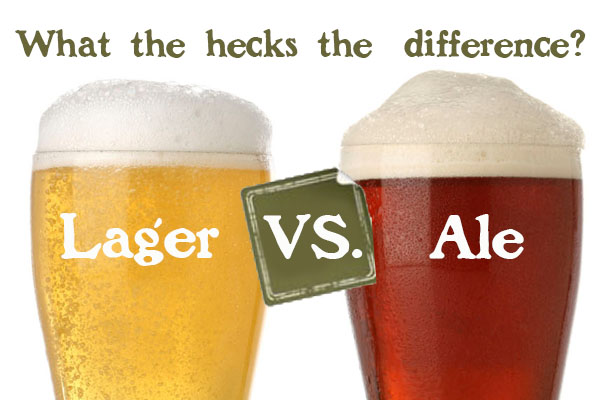Ale vs Lager - What's the Difference?
What is the difference between ales and lagers?
As a beer lover, this is the best of times to be alive, with local breweries opening everywhere and so much great craft beer available. However, in the face of this abundance, it would be easy to feel overwhelmed by the choices: Pilsners, IPAs, Bocks, Browns, Stouts, Porters and so on.
There are two main categories of beer and they are Ales and Lagers. Both are uniquely wonderful, but it can be overwhelming to understand them all. So, let’s take a step back…
To begin, we must understand that all beer is either an ale or a lager. This is not determined by color, flavor or alcohol strength, but by the fermentation technique and yeast used in brewing.
What exactly is the difference between ales and lagers?
The basic difference between these two major beer classifications is how they are fermented. Ales are fermented with top-fermenting yeast at warm temperatures (60˚–70˚F), and lagers are fermented with bottom-fermenting yeast at cold temperatures (35˚–50˚F). Because of their warm fermentations, ales can generally ferment and age in a relatively short period of time (3-5 weeks). On the other hand, lagers take much longer to ferment (up to 6 to 8 weeks) because they are cold fermented.
The birth of the Pilsner style in the 1800’s introduced much of the world to lagers. Virtually all beer before then were ales since yeast was not known as an ingredient and cold fermentation would have been difficult.
Both ales and lagers can be produced today with relative ease. However, in the current craft beer market ales are typically more common among craft brewers because ale yeast can produce beer in as little as 7 days, making it more convenient for small breweries who may not have the fermenter space to produce lagers on a regular basis. In medieval Europe, ale, along with bread, was a very important source of nutrition. During this time, people (including children) drank small beer, which was unfiltered and porridge-like in consistency, but highly nutritious, with just enough alcohol (1% ABV) to act as a preservative. This provided nutrition and hydration without the effects of alcohol or the dangers of water.
The advancement of technology played an important part in the advancement of Ales and Lagers. The Bavarian Purity Law of 1516 actually stated that beer could only be make of grain, hops, and water. It made no mention of yeast since it was an unknown ingredient.
The ability to see yeast strains under a microscope and advent of refrigeration in the 1800s altered the course of beer history for the next century. In the late 19th and most of the 20th centuries saw the dramatic rise of lager beer. The mellow taste and lower alcohol content led to the take over of pilsner-style beers.
Thankfully, ale has made a resurgence in the past 40 years. As of 1974, there were just 55 breweries operating in the United States. They were mass producing the flavorless, watered down “lager” a true craft beer lover would not be caught dead drinking.
Today, there are more than 6,000 breweries in operation, creating ales, lagers and combinations of the two that have brought beauty and art back to brewing.
So, what's the bottom line when it comes to beer?
All beer is either an ale or a lager (or hybrid). This is not determined by color, flavor or alcohol strength, but by the fermentation technique and yeast used in brewing. The only detectable difference between and ale or a lager is the presence of esters in ale. These esters are produced in greater quantities during warm fermentation. This is why they are more present in ales due to their warm fermentation.
We are experiencing a brewing renaissance, and it has given beer lovers an abundance of flavor and character in our beer choices with flavor and character. Lagers remain popular, but the resurgence of ales has expanded the palate of many beer drinkers and altered the course of beer history in the most positive of ways. We have nothing to look forward to but more great beer, both ale and lager.



